Anse Chastanet is a renowned snorkeling spot off Saint Lucia’s west coast. As it is easily accessible from the shore and protected by a marine reserve, it is a must-do for every snorkeling lover coming to Saint Lucia. A wide variety of colorful fish typical of Caribbean coral reefs are to be seen, as well as schools of open-water fish, which find shelter at the border of the Marine Reserve.
This spot has been added by
tinoumer
10 spots added - 171 photos shared
Last updated on
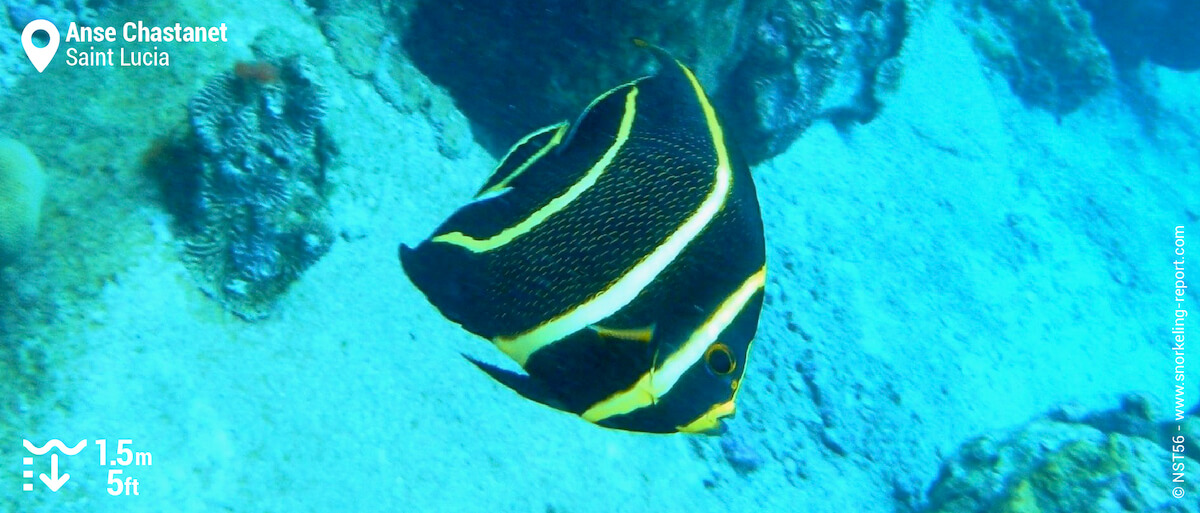
How to get to Anse Chastanet?
Anse Chastanet is located north of Soufriere bay. Car drivers can get to the beach taking a small road from Soufriere (1 mile). If you happen to stay at Anse Chastanet, Anse Chastanet Resort or Jade Mountain Resort, you already are in front of the spot.
The reef can also be reached by boat. Day or half-day excursions leaving from Soufriere or Castries often stop here, they sometimes include some more stops at neighboring snorkeling spots. Anse Chastanet is also a popular mooring spot for catamarans cruising through the Lesser Antilles.
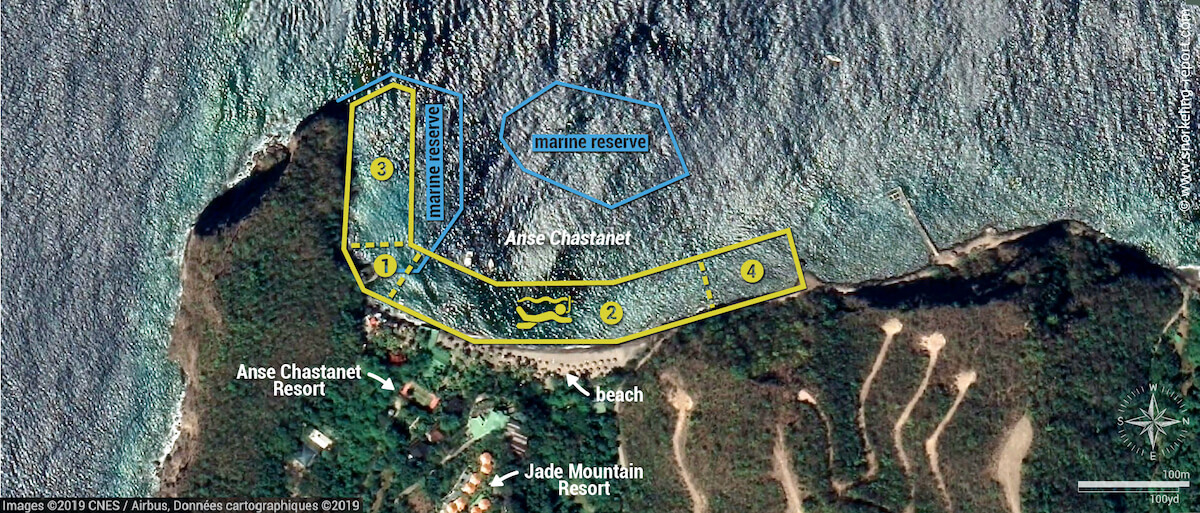
Entering the water at Anse Chastanet for snorkeling
The safest entry point for exploring the Marine Reserve (zones 1 and 3) is off the steps at the end of the vessel landing jetty although entry can also be made from the beach, watching out for boats.
The best entry point for the right-hand side of the bay (zones 2 and 4) is on the beach before the rocky outcrops start to appear.
Anse Chastanet snorkeling tips
Anse Chastanet is an enclosed bay with large cliffs to the south, a sandy beach in the center, and rocky outcrops to the north of the bay. The area has particularly good examples of open water fish species, that gather off the edge of the Marine Reserve, as well as a healthy array of sponge, hard corals, and gorgonians.
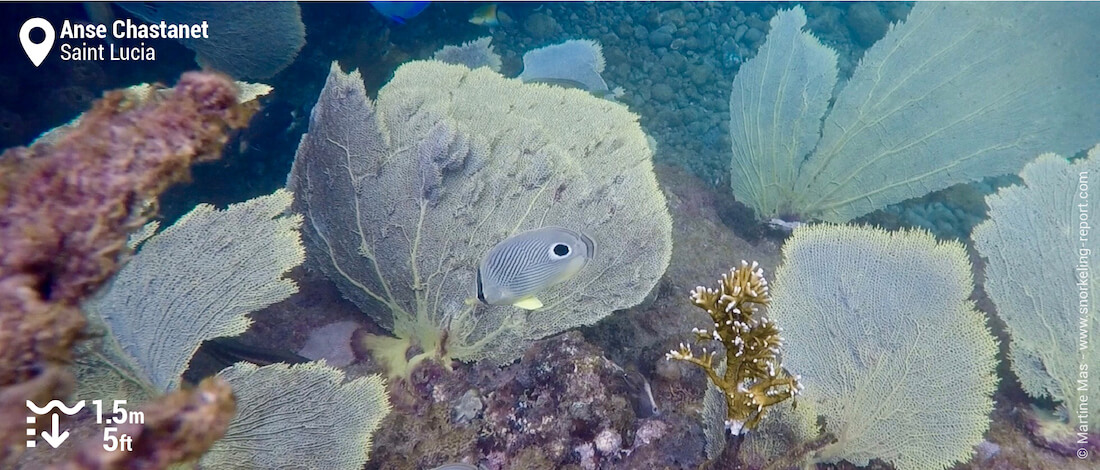
Several areas within the bay at Anse Chastanet are both safe and interesting to snorkel over. The two main areas of interest are the reserve area to the left (south) of the bay (1 & 3) and an area of rocky outcrops to the right, in the north of the bay (2 & 4). The center of the bay is composed of dense seagrass beds.
To the left of the bay the Marine Reserve area is marked out with buoys and floating rope. No boats are allowed in this area. In the shallow waters around the jetty (area 1 on the map) there are a variety of habitats, including isolated rock outcrops, covered in tube and barrel sponges, and surrounded by sand and seagrass.
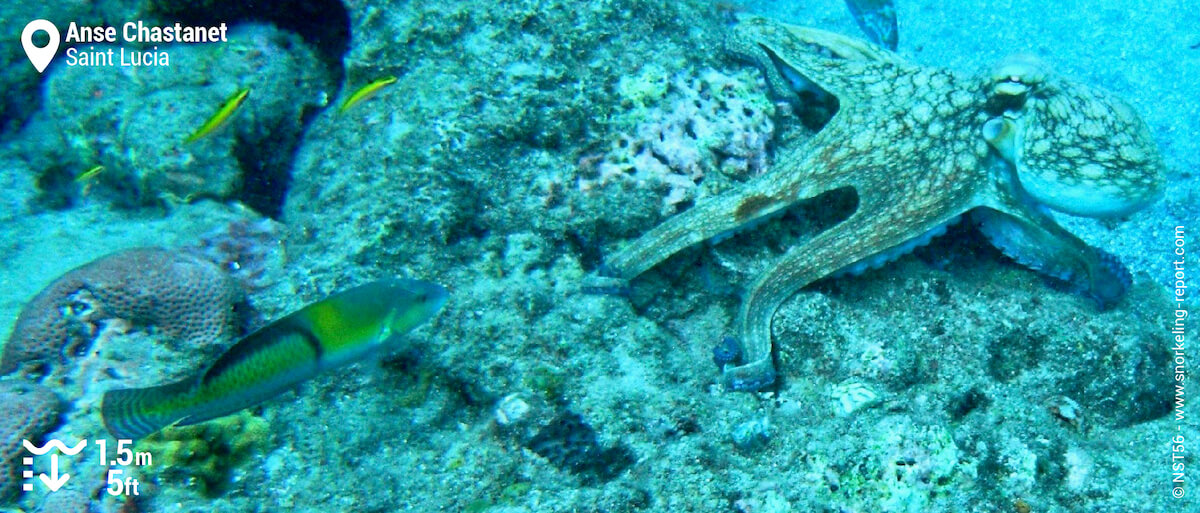
Below the cliffs (area 3 on the map) the water is much deeper and open water fish may be observed shoaling at the boundary of the reserve area. At the base of the cliffs there are several caves, gullies and overhangs. Below the cliffs, a variety of corals, sponges, sea fans and urchins may be found.
On the right-hand side of the bay (area 2 on the map), the rocks are covered in a rich variety of sponges and sea fans, with numerous small fish species noted amongst them. The sea fans dominate the rocks further to the right of the bay, suggesting wave exposure is greater in this area, so take care when there is a swell.
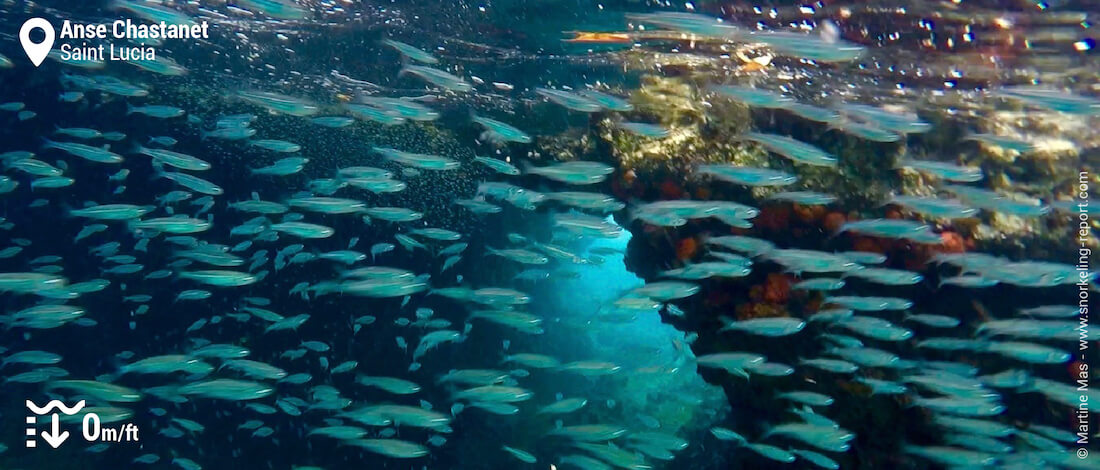
Interesting habitats, including the continuation of the rocky outcrops, with very dense growths of seawhips and searods can be found at the northern (right-hand) extent of the bay. These occur at their greatest density on the rocks below the large outcrop (zone 4 on the map).
The whole of the bay supports a wide range of fish species, including some of which are found exclusively over the seagrass, particularly in the center of the bay.
Restaurants and accommodation nearby
Three hotels are set in Anse Chastanet: Anse Chastanet, Anse Chastanet Resort and Jade Mountain Resort. Many other food and accommodation options can be found nearby, notably in Soufriere.







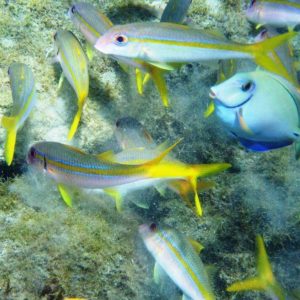

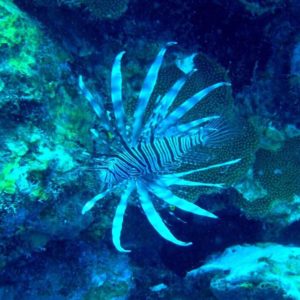



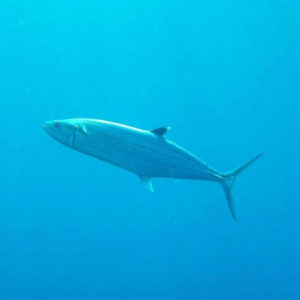




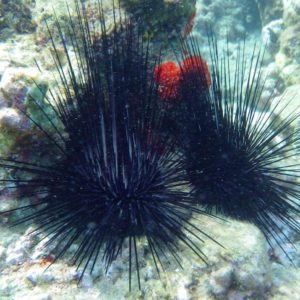
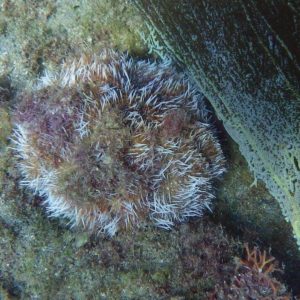


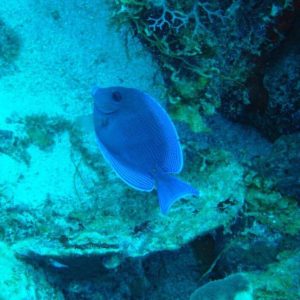

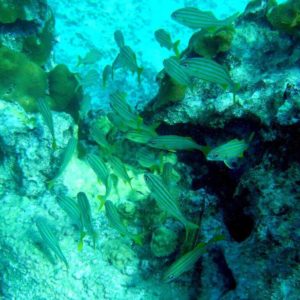
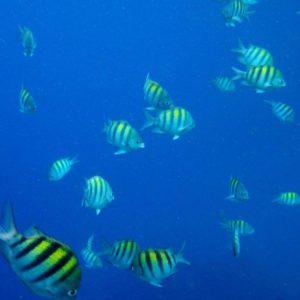

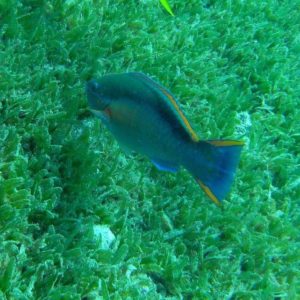
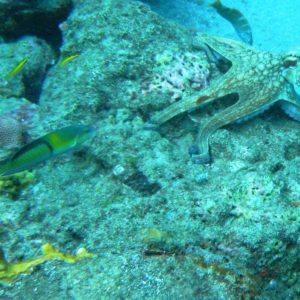


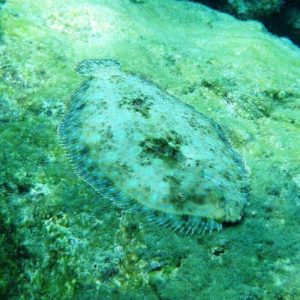



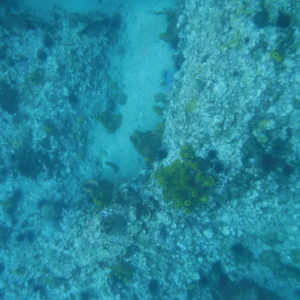
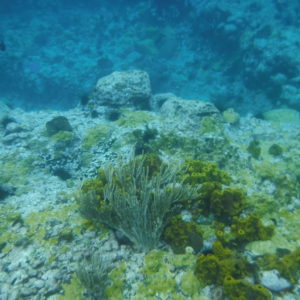

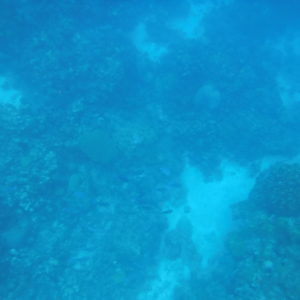
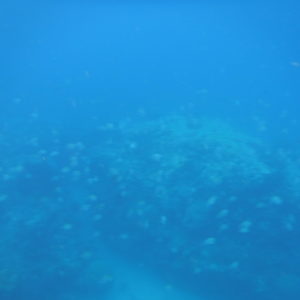

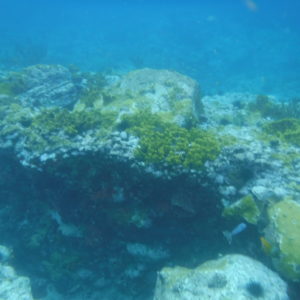
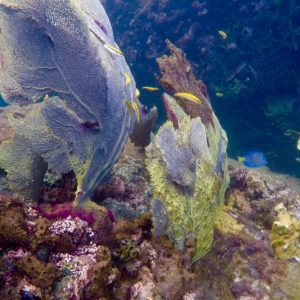

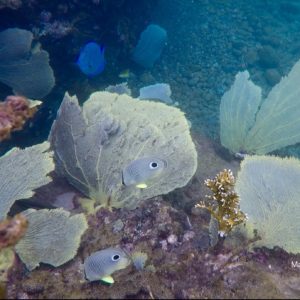

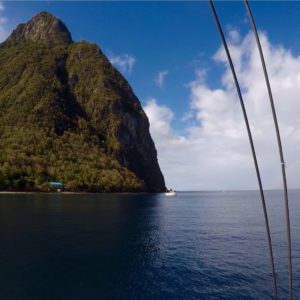
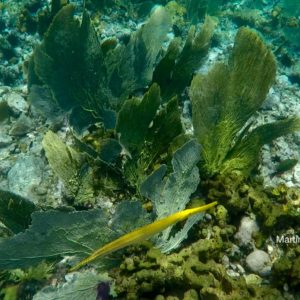
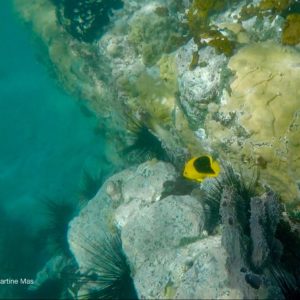
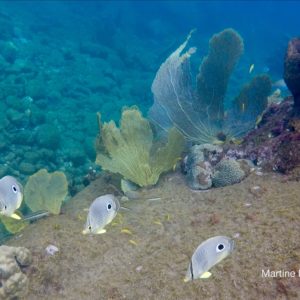





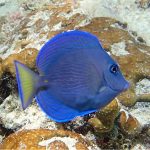
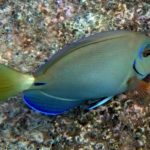
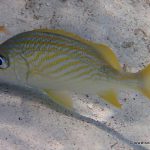




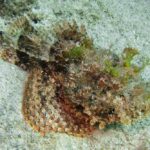
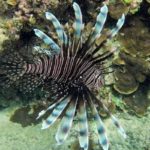
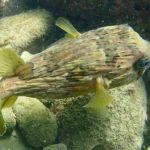








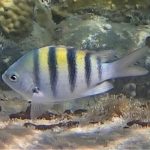



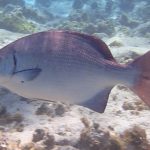




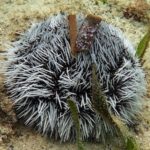
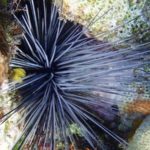
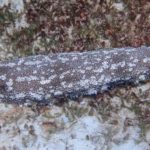

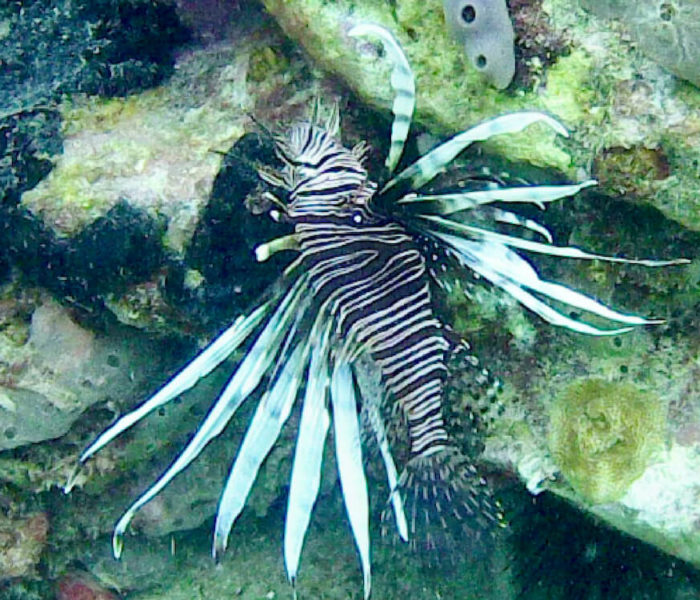

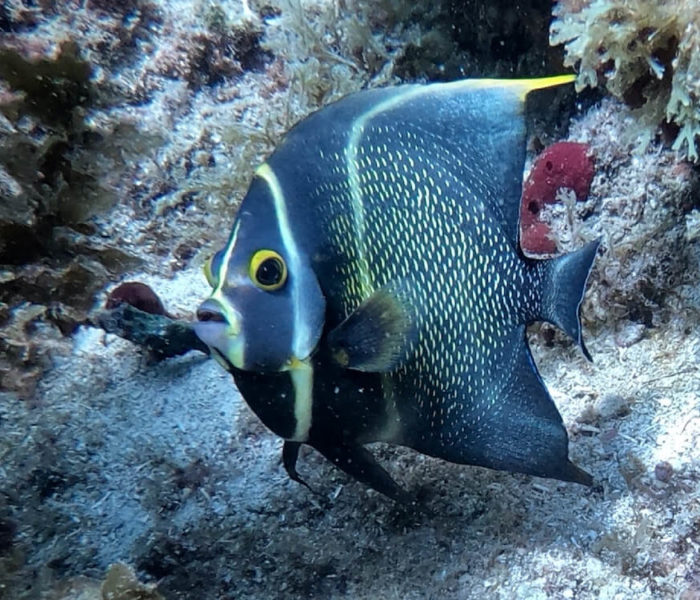
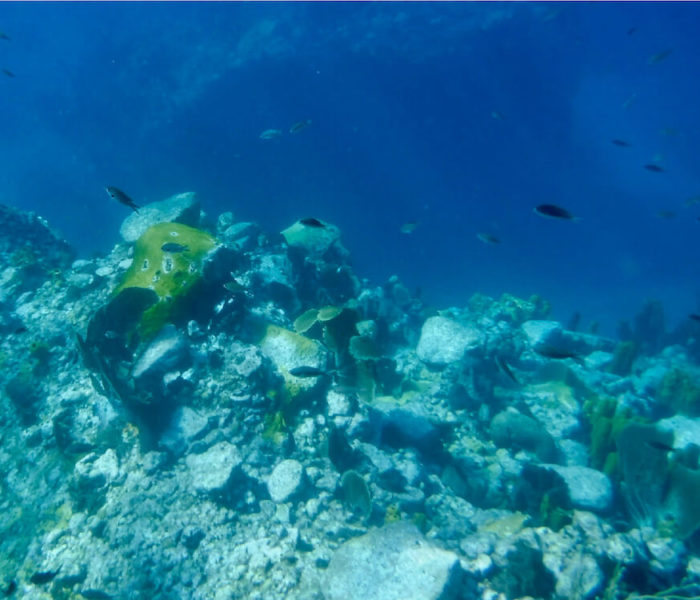

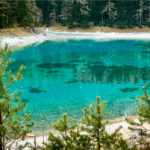

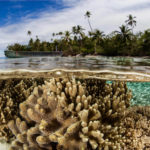
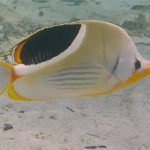




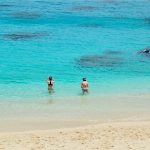

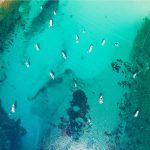

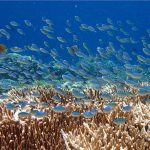







Comments